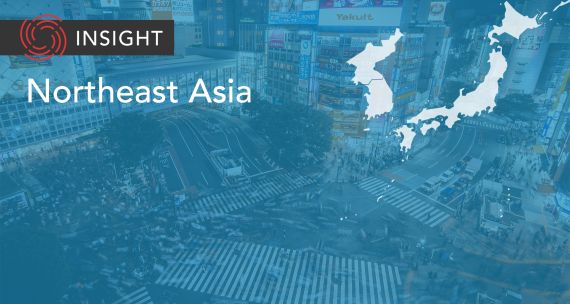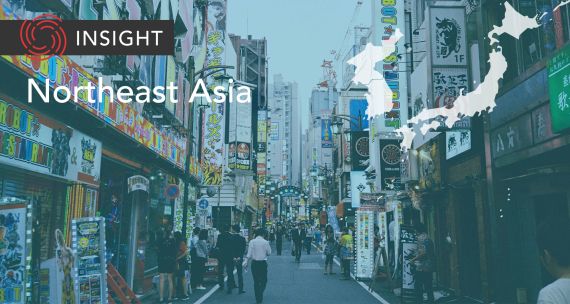The Takeaway
On July 4, the director general of the International Atomic Energy Agency (IAEA) presented Japanese Prime Minister Kishida Fumio with a formal report that found Japan’s plan to release treated wastewater from the Fukushima nuclear power station is “consistent with international safety standards.” However, despite the IAEA’s endorsement, domestic and international concerns around safety persist as the release date — which remains unspecified — looms.
In Brief
Since the devastating nuclear disaster at the Fukushima No. 1 nuclear power plant in March 2011, the Japanese government and relevant domestic and international organizations have worked towards decommissioning the nuclear power station. However, major hurdles regarding nuclear waste management remain, including the decontamination and storage of wastewater used to cool the damaged reactor. Groundwater and rainwater, which have seeped into the reactor for years, also need to be pumped out and stored. About 1.32 million tonnes of wastewater, enough to fill 500 Olympic-sized swimming pools, have been kept in over 1,000 tanks built by the Tokyo Electric Power Company. If nothing is done, storage space could run out as early as 2024.
Faced with the pressing issue of wastewater storage, the Japanese government initiated a treatment and release plan in 2019, deemed as the most viable option. In April 2021, the government officially announced the Fukushima water release plan, which Japan’s Nuclear Regulation Authority approved in July 2022. Wastewater treatment and release is not new and is done by nuclear power plants globally.
The IAEA’s task force has conducted five review missions to Japan and published six technical reports on the planned Fukushima water release. Most recently, on July 4, the IAEA’s director general, Rafael Mariano Grossi, delivered a comprehensive report on the safety review to Kishida in Tokyo. The report found that Japan’s plans were “consistent with international safety standards” and will have “negligible radiological impacts on people and the environment.” The IAEA has committed to continue monitoring the planned water discharge.
Implications
Concerns regarding the water release are mounting despite the Japanese government’s attempts to quell domestic and international outcry. And the IAEA reports have done little to reinforce the safety of Japan’s water release plans: there are reports of South Koreans panic-buying sea salt, while some opposition politicians in South Korea are accusing the IAEA of colluding with Japan. Some expert groups have labelled the most recent IAEA report as “unscientific.”
Domestically, although the Japanese government has committed to safeguarding local fisheries, a Japanese fisheries co-operative recently handed a letter of opposition to the country’s trade minister. Even within the government, opinions vary. For example, on July 2, the leader of Japan’s junior coalition partner, the Komeito, warned that the government should potentially delay the water release to avoid the summer swimming season.
Developing consensus on the water release has been an enormous undertaking and, even with the IAEA report, international support remains minimal given the substantial amount of water stored at the Fukushima plant. Both Japan and South Korea have seen public protests, while governments from surrounding jurisdictions, including China, Hong Kong, and various Pacific Island nations, have voiced their concerns directly to the Japanese government. At the same time, Japan has allowed South Korea to inspect the Fukushima nuclear station and has conducted high-level political dialogues with neighbouring countries. On July 7, the South Korean government reversed its long-standing opposition and signed off on the plan, stating that it meets international standards. Beijing, meanwhile, has been ramping up opposition, stating that the report “is not proof of the legality and legitimacy” of the plan and imposed a de facto food ban on fish imports from the Fukushima area.
What's Next
- Rallying public support
Irrespective of public opinion, Japan is determined to release the treated wastewater from the Fukushima nuclear power plant, a step Kishida asserts is both “safe” and “unavoidable” for decommissioning the plant. While public consensus may be difficult to achieve, it is essential to enhance co-operation and dialogue with local and international groups throughout the discharge process to mitigate the negative impact of the water release.
- High-level dialogue
In February, the Micronesian president dropped protests against Japan after meeting with Kishida and, more recently, South Korea signed off on the water release plans. Japan will pursue further high-level dialogues as officials are planning to meet with counterparts from neighbouring countries.
- The Canadian perspective
Following the Fukushima disaster, Canada began implementing additional measures to ensure nuclear safety both domestically and internationally. Canada is also a member of the Integrated Fukushima Ocean Radionuclide Monitoring network and helps monitor radiation from Fukushima in Canadian waters. Throughout the water discharge, Canada, like many countries, will likely increase safety monitoring of water radionuclide levels.
• Produced by CAST's Northeast Asia team: Dr. Scott Harrison (Senior Program Manager); Momo Sakudo (Analyst); Tae Yeon Eom (Analyst); and Sue Jeong (Analyst).




